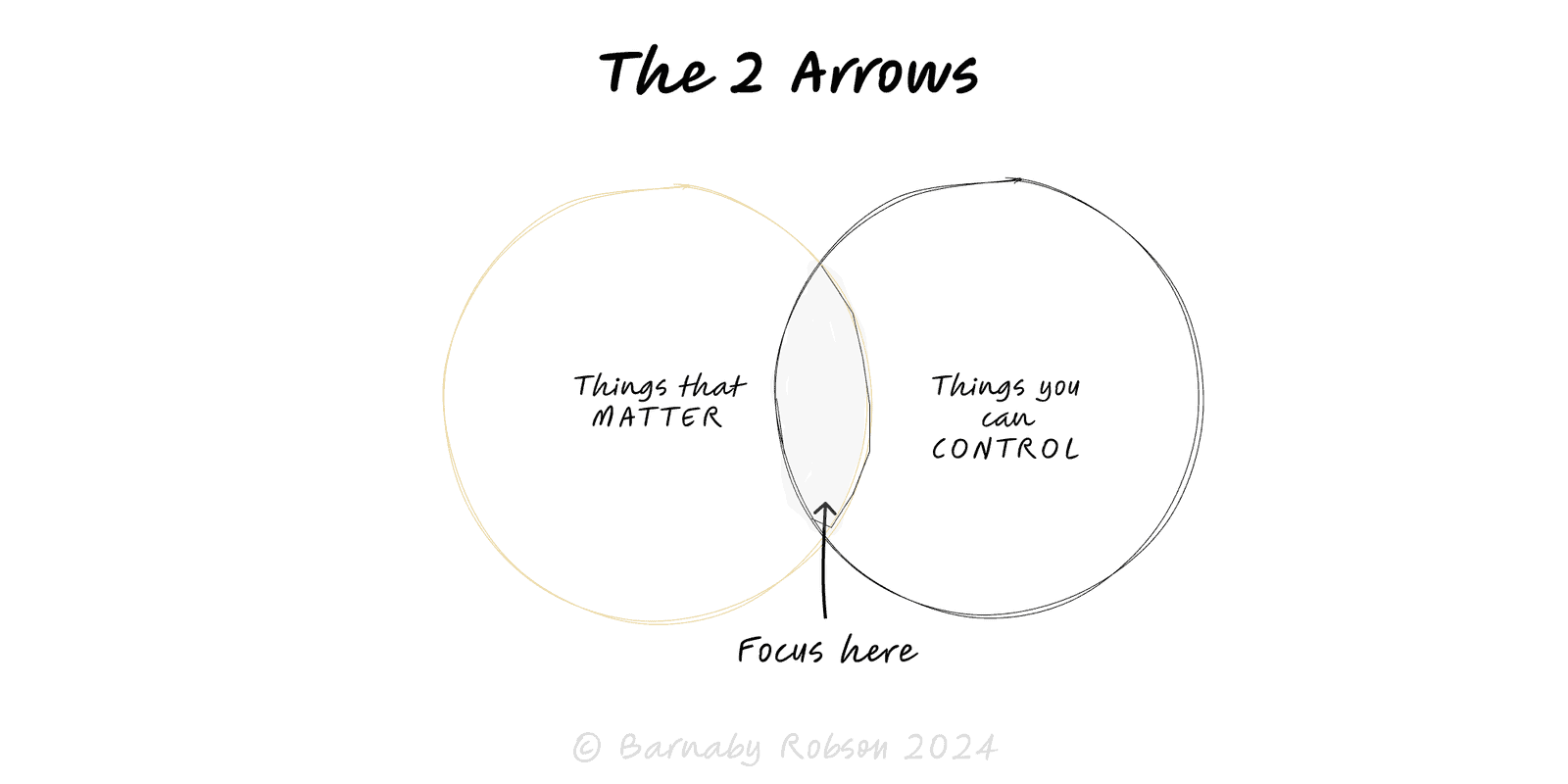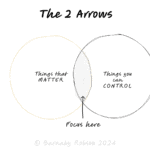The two Arrows
Epictetus (“Focus on what you can control”)

A practical prioritisation lens: point one arrow at things that matter, the other at things you can control. The overlap is your highest-leverage work. Everything else is either influence, maintain, or ignore.
High Matters × High Control – Do now. Commit resources, set deadlines, own results.
High Matters × Low Control – Influence. Reframe scope to what you can change; escalate with options, shape incentives, build coalitions.
Low Matters × High Control – Maintain/Automate. Standardise, delegate, or set guardrails; don’t over-invest.
Low Matters × Low Control – Ignore. Drop from agenda; track only if risk emerges.
Exec focus – cut status noise; protect time for top-right work.
Risk management – separate controllable mitigations from external monitoring.
Team planning – convert “concerns” into controllable tasks or park them.
Personal productivity – kill anxiety loops by listing concerns and extracting the controllable slice.
List issues for the next cycle (week/quarter).
Score importance (impact on outcomes) and control (direct ability to change) on 1–5.
Plot items on the 2×2; move top-right to a dated plan.
Refactor top-left into a controllable sub-scope or an influence plan (owner, tactic, stakeholder).
Automate/delegate bottom-right; drop bottom-left.
Vague “control” – define a controllable slice (budget, terms, design, process) even in messy areas.
Over-escalation – influence with specific options; don’t pass up problems unshaped.
Rotating noise – review weekly; demote items that stay low-matter or low-control.
